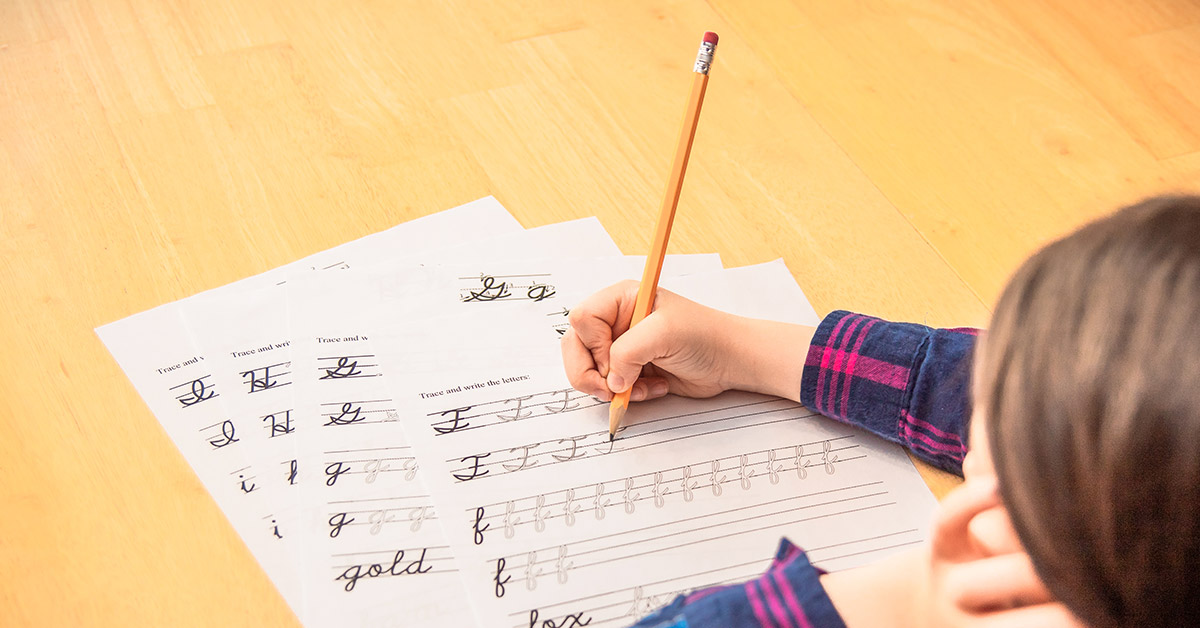With the advancement of modern technology and the continuous invention of life-made-easy gadgets, several academic practices have become old-fashioned and obsolete. Many schools and districts around the world have scrapped handwriting from their curricula, replacing good old calligraphy and cursive skills with keyboarding proficiency. Not to mention that many wonderful outdoor activities and experiments have been replaced with excessive screen time, but that’s a whole other story. Generation Z may be missing out on a lot. But one school district is bringing back cursive writing and ensuring all students learn it.
Well, the State of Texas has decided to bring it back. In 2017 it made the initial changes to do so, but this 2019-2020 school year teaching cursive writing skills will be back for good [1]. Too much technology can be detrimental to the all-round development of children. Surely certain skills are essential, but even science has shown that students learn and recall better when they take hand-written notes. Cursive has been absent from their curriculum since the early 2000s, and now, it’s time to rekindle a passion for the lost art of quality penmanship.
Read Next: A School District Voted to Reinstate Paddling for Students Who Misbehave
Potential benefits of cursive writing skills
According to an update on the Texas Essential Knowledge and Skills, the state’s standard for students’ curriculum in all grades, second graders would begin taking classes on cursive starting with the 2019-2020 new school session. They’ll progressively learn cursive until their 5th year. Cursive is not only fine art but it’s also a good stimulant for the brain, especially in children. It synchronizes communication between the left and right hemispheres of the brain, something you don’t get with typing and texting [4].
Despite all the promising rewards, some people are still convinced it’s a waste of time to re-introduce something as old-school as cursive into the curriculum. To many parents, it would seem as though their children are being taken two decades back. However, it’s not so much about modernity as it is about the benefits.
“Language is so integral to the thinking process,” says Diane Schallert, professor of educational psychology at the University of Texas to Kens 5 [5]. “In the first grade, we learned only cursive, we never learned to print. In language comprehension, there’s this reciprocity between producing and comprehending.”
She explains that it’s not as easy as people think to add or remove subjects to the curriculum. Several factors have to be taken into consideration before deciding what the students need to learn and what they can do without.
“There’s only so much time in a day. Whatever you decide to put into the curriculum, you’re deciding to take something out,” she said.
Cursive is a form of art
Some schools are already a step ahead of the TEKS board. Schools in the Temple Independent School District includes cursive as part of their lesson plans. It’s now a full subject in the standard curriculum to be taught once the new school year begins [6].
“It’s important that our kids are able to communicate through the written word and through the spoken word,” said Elizabeth Giniewicz, executive director of elementary curriculum for Temple ISD. She explains that cursive is essential for hand-eye coordination, fluidity in writing, memory, and motor skill development.
“It helps make those connections and the fluid strokes and all of the lettering so your brain just develops appropriately,” Giniewicz said.
Keep Reading: School Teaches Girls How To Change Tires and Check Oil Levels as Part of New Initiative
Editor’s Note (03/16/2021): This article originally appeared on The Hearty Soul in August 2019.

